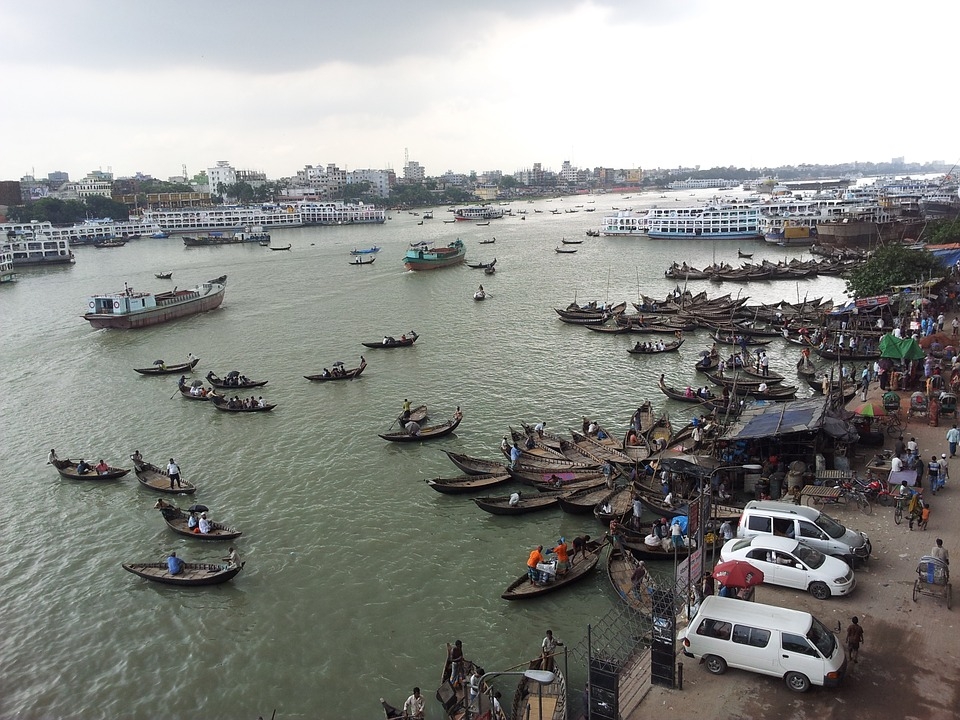Ushering in a Blue Economy for Sustainable Growth in Bangladesh

The People’s Republic of Bangladesh is a country whose maritime territory is roughly equal to the size of its land area.
If you can measure it, you can protect it—that is the idea behind the innovation of the Blue Economy concept. How much does the ocean and coast contribute to a nation’s Gross Domestic Product and prosperity? How should a country manage and maximize precious marine resources? These questions faced the leaders of the People’s Republic of Bangladesh, a country whose maritime territory is roughly equal to the size of its land area. Bangladesh is the world’s eighth most populous country, and is often referred to as “ground zero for climate change,” ranked sixth on the 2018 Global Climate Risk Index. Dhaka, its capital and largest city has a thriving industrial port, and most of Bangladesh is covered by the Bengal Delta, the largest delta on Earth. The country has 700 rivers and 5000 miles of inland waterways.
Few documents exist to describe how countries can transition their ocean economies toward a blue economy, despite much discussion globally.
The Center for the Blue Economy in collaboration with the World Bank and Duke University has published a study to help Bangladesh understand the size and scope of its blue economy. Toward a Blue Economy: A Pathway for Sustainable Growth in Bangladesh, aims to synthesize the current theory and practice of the blue economy concept to govern economic activity linked to the ocean, and to provide a framework for the Government of Bangladesh to analyze its potential. Dr. Charles Colgan, Director of Research at the Center for the Blue Economy and Dr. Pawan Patil, Senior Economist at the World Bank and Advisory Council member at the Center for the Blue Economy are among the co-authors. The blue economy of Bangladesh and small island developing nations is something that Dr. Patil has been thinking and writing about for many years.
..of the 54 ocean-facing nations, Bangladesh stands out. It is one of the few non-island countries that has been working systematically toward understanding how their coastal and ocean area could become an engine for sustainable development and economic growth.
In his World Bank blog entitled, Bangladesh Is Thinking Big by Thinking Blue, Dr. Patil writes that Bangladesh is simultaneously leading and learning—hosting high level meetings while engaging in research to guide decision making over policy and investment, including ways to reduce poverty and share prosperity. “The World Bank and the European Union are supporting Bangladesh’s effort to better understand what the blue economy is and why it matters,” he writes.
Toward a Blue Economy: A Pathway for Sustainable Growth in Bangladesh is the next step in making the blue economy an operation, offering a conceptual framework to guide policy-makers in Bangladesh in proposing specific reforms, by illustrating the economic activities of the ocean economy together with the underlying natural capital, as well as other types of capital. Most importantly, the report summarizes the information base needed for the Government of Bangladesh to set realistic targets for a blue economy development pathway and monitor progress. Now it is up to government decision makers in Bangladesh to continue to lead the world, demonstrating what the blue economy looks like in practice: a healthy ocean providing long-term human health, wealth derived in a sustainable manner, and a shared prosperity.
For More Information
Read the full report: Toward a Blue Economy: A Pathway for Sustainable Growth in Bangladesh
Read Dr. Pawan Patil’s World Bank Blog: Bangladesh is Thinking Big by Thinking Blue
